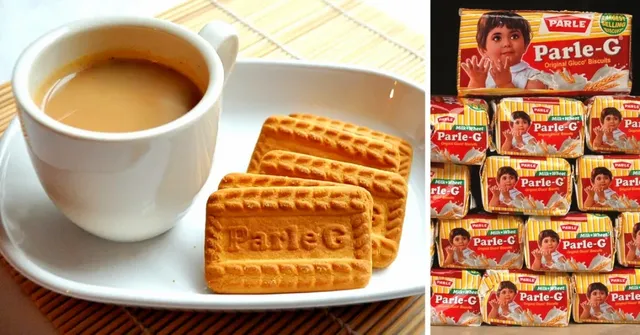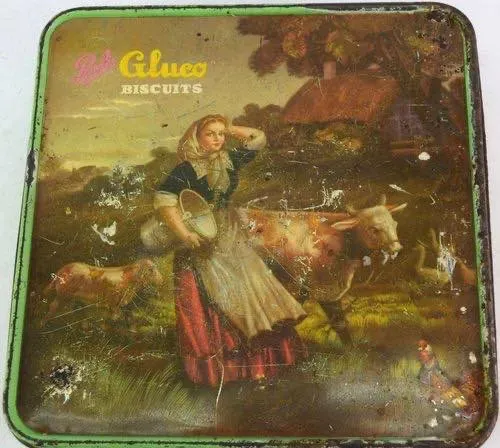There is a saying: "A friend who has been to India, if you haven't eaten Par G biscuits, it is not considered to be stale."
For many years, it has been a loyal companion of Indian tea, insisting on the most unpretentious prices.
The perfect match for Indian tea with Par G biscuits
Early in the morning or late at night, rich or poor, in cities or far away, the little Pal G biscuits have comforted the stomachs of Indians for generations. It has also become one of the favorite tea biscuits for foreigners who have been to India. To all over the world.
Who is the little girl on Pal G's package?
Little girl
Undoubtedly, in the past 60 years, this little girl with big eyes, round face, curly hair wearing a doll collar and holding a pair of small hands has a very high appearance rate in the lives of the Indian people.
Everyone likes her, and there are many stories about her.
Some people say that she is from Nagpur, called Neeru Deshpandey, and she was only 4 years and 3 months. Some people say that her name is Gujian Gudanya and she is 65 years old now.
In the end, Mayank Shah, the product manager of Pal G, came forward to clarify the facts.
It turned out that this little girl was a creative creative, an illustration made by Everest in the 1960s.
Cookies older than India
Pal is a place name. Pal has a family business called Chuhan. It has been producing sugar since 1929. During World War II in 1939, it produced the first biscuit: Pal G, which became the British at the time. An Indian alternative to branded glucose biscuits.
India's independence was in 1947. Pal G biscuits are actually older than India!
In the earliest days, the packaging of biscuits was made of butter paper, and only simple names were printed. Later, I switched to plastic packaging, and the colors and patterns continue to this day without any change.
In the early days, there were also higher-level Pal G packaging, which used tin boxes. Now such boxes can only be seen in antique shops.
Tin box packaging
Everest designed the packaging for Pal G and released the first TV commercial sung by "Dadaji (Hindi meaning: Grandpa) and Grandson Band" in 1982. At that time, the advertising slogan that resounded in India, "Tasty and Energy-Pal G" was popular.
G represents the change of meaning
In the early days, G was the abbreviation for glucose, as the name suggests, this is a kind of biscuit containing glucose.
Since glucose can be directly absorbed and utilized, this kind of biscuit can quickly drive away hunger.
Beginning in 2004, Pal G company gave their G a better meaning, G stands for Genius (genius).
The image of cross-border genius children began to endorse TV commercials, such as sports, science, and aerospace.
G is for genius
In 2018, Pal G was aware of the rapid changes in the digital field and conformed to the demand for digital geniuses in the world today. On the premise that G represents genius, it fine-tuned the meaning of G and tilted towards digital genius.
Let's see an interesting advertisement.
In the advertisement, a boy and his mother went to a government office with an old phone. The boy questioned the old phone. There was no selfie, no games, no internet, no pockets, and dusty.
The civil servant explained: "My child, there were no smartphones in that era."
The child took out Pal G and asked, "Is there Pal G at that time?"
"Yes!" the civil servant replied.
"Okay! At least someone is smart!"
Mom and the civil servant looked embarrassed.
In the next shot, a bag of Par G biscuits is placed in front of the old phone. The child asks the phone: "Are you smart now?"
4551 Legend
At any one second of any day, at least 4,551 Par G biscuits were eaten in India.
This is not a legend, but a fact.
Just look at an Indian grocery store or supermarket to see if there are such biscuits; just ask an Indian on the street, if she/he has eaten Par G biscuits today, you will know why!
The market demand is so great that the Pal G plant produces 400 million biscuits every day. The value of the cookies is equal to the price of Facebook's acquisition of Instagram, and this value was created by Kevin Sestim in two years.
There are 6 million Par G biscuits sales points in India, and one million packs of Par G biscuits are sold every week.
A small packet of Par G biscuits is only 5 rupees (less than 50 cents), but it contains 120 calories. There are also packages of Rs 10 and larger, as well as Rs 2 packages.
Whether it is an nerd with a cup of Indian tea in the morning, a student who has been in class for a day or a brain worker who has been working for a day, or a person who does three rounds of manual labor, they all have a cookie.
Even outside the temple and in front of the traffic lights, it is this kind of high-energy biscuit that many people give to homeless beggars.
According to Nielsen's survey, India Pal G biscuit is the world's best-selling biscuit brand, and it is also the first Indian brand to break the 50 billion rupees mark for fast-moving consumer goods.
Someone has calculated that if the small packages produced by Pal G over the years are connected end to end, the length can reach the moon!
Indians love Pal G biscuits so much that when the Pal G factory in Mumbai, which had been in service for 87 years, closed in 2016, many Indians could not accept it.
The people who lived around missed the feeling of standing on the overpass and smelling the rich milky air.
The 87-year-old Pal G factory in Mumbai
In March of this year, India implemented lockdown measures to prevent the spread of the new crown virus.
New Crown Sealed India

Surprisingly, the market share of Pal G biscuits has increased by 5% against the trend, and sales have set the best performance in the past 40 years.
Obviously, this is also related to its low price and high energy. The migrating army of migrant workers rely on a small Pal G to support their hometown.
